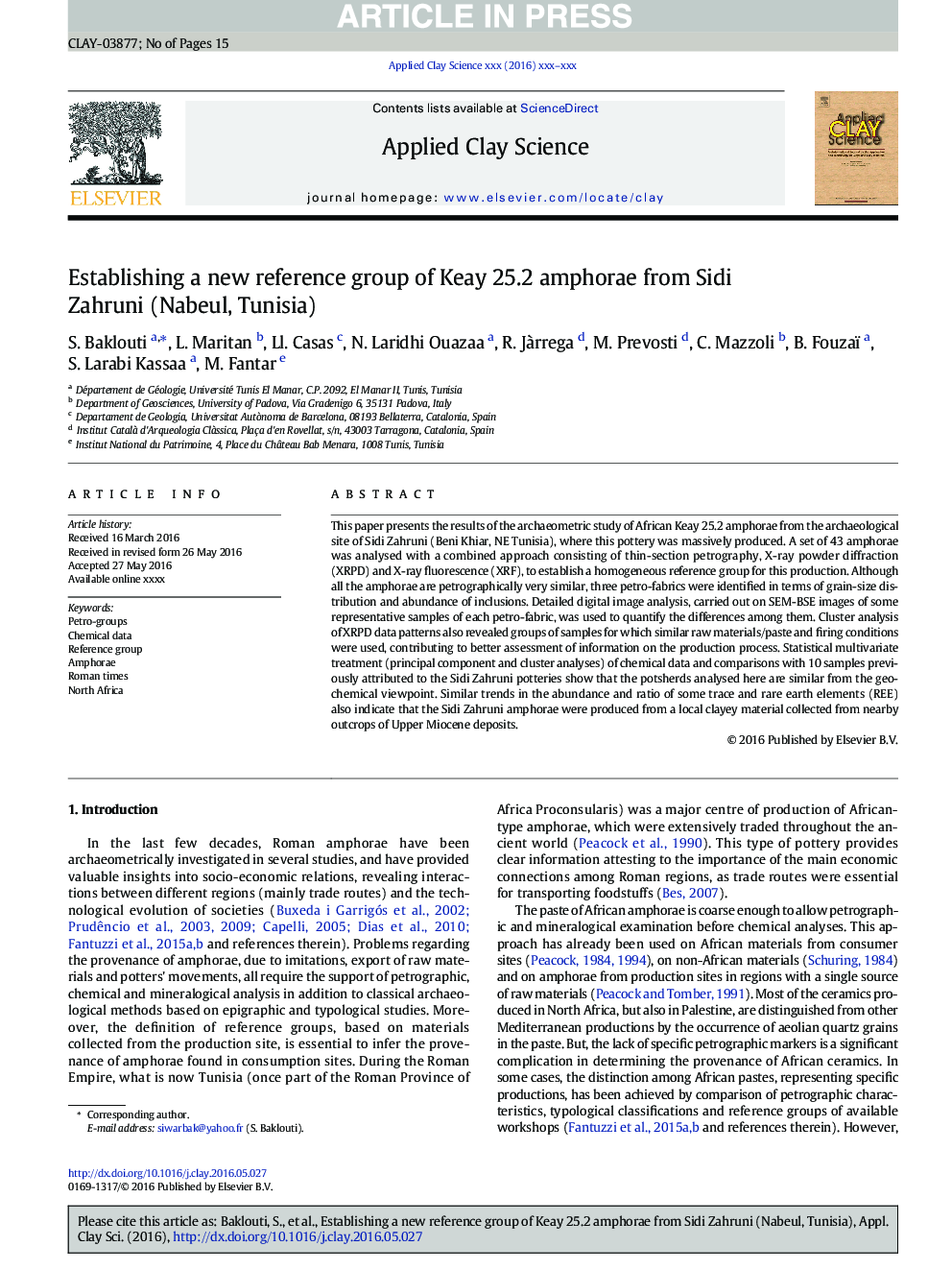| Article ID | Journal | Published Year | Pages | File Type |
|---|---|---|---|---|
| 5468743 | Applied Clay Science | 2016 | 15 Pages |
Abstract
This paper presents the results of the archaeometric study of African Keay 25.2 amphorae from the archaeological site of Sidi Zahruni (Beni Khiar, NE Tunisia), where this pottery was massively produced. A set of 43 amphorae was analysed with a combined approach consisting of thin-section petrography, X-ray powder diffraction (XRPD) and X-ray fluorescence (XRF), to establish a homogeneous reference group for this production. Although all the amphorae are petrographically very similar, three petro-fabrics were identified in terms of grain-size distribution and abundance of inclusions. Detailed digital image analysis, carried out on SEM-BSE images of some representative samples of each petro-fabric, was used to quantify the differences among them. Cluster analysis of XRPD data patterns also revealed groups of samples for which similar raw materials/paste and firing conditions were used, contributing to better assessment of information on the production process. Statistical multivariate treatment (principal component and cluster analyses) of chemical data and comparisons with 10 samples previously attributed to the Sidi Zahruni potteries show that the potsherds analysed here are similar from the geochemical viewpoint. Similar trends in the abundance and ratio of some trace and rare earth elements (REE) also indicate that the Sidi Zahruni amphorae were produced from a local clayey material collected from nearby outcrops of Upper Miocene deposits.
Related Topics
Physical Sciences and Engineering
Earth and Planetary Sciences
Geochemistry and Petrology
Authors
S. Baklouti, L. Maritan, Ll. Casas, N. Laridhi Ouazaa, R. JÃ rrega, M. Prevosti, C. Mazzoli, B. Fouzaï, S. Larabi Kassaa, M. Fantar,
